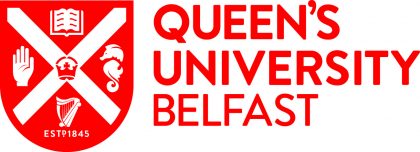Protecting the Rights of Individuals in Northern Ireland under the Draft Withdrawal Agreement – some preliminary observations
By Professor Rory O’Connell
On 14 November, two documents were published on the UK’s withdrawal from the European Union: the Draft Withdrawal Agreement and a much shorter statement on the Future Relationship. The former, if approved by the UK, the European Parliament and the European Council (acting by a qualified majority) will be legally binding, whereas the Future Relationship document is a statement of agreed political intentions. The Withdrawal Agreement is a detailed 585 page document, while the Future Relationship statement is a 7 page list of bulletpoints.
The Withdrawal Agreement includes protocols including a Protocol on Ireland/Northern Ireland (the Protocol). The Protocol includes 10 annexes. It includes a specific article on the ‘rights of individuals’. Before turning to that let me note two other important human rights issues.
One of the most important things in terms of rights protection is that the Future Relationship document indicates the UK reaffirms its commitment to the European Convention on Human Rights and its system of enforcement. This is welcome and important. The ECHR is not a part of EU law and in theory Brexit had no implications for adherence to it. However the Conservative Party had been equivocal at best about the ECHR in its 2017 manifesto saying only that the UK would remain a signatory for the duration of the parliament elected in 2017. The Future Relationship document recognises that the relationship must be based on ‘shared values including the respect for human rights and fundamental freedoms’.
Going back to the Draft Withdrawal Agreement: the preamble to the Protocol includes recognition that Irish citizens in Northern Ireland ‘will continue to enjoy, exercise and have access to rights, opportunities and benefits, and that this Protocol should respect and be without prejudice to the rights, opportunities and identity that come with citizenship of the Union’. This Preambular reference has a number of problems highlighted by BrexitLawNI and in particular the Committee on the Administration of Justice. Being in a Preamble, the undertaking is not a legally binding obligation; it is not clear what rights are covered and most importantly whether they can be exercised practically in Northern Ireland or are effectively ‘dormant’ rights.
By contrast, Article 4 of the Protocol on the Rights of Individuals will be legally binding and to this we now turn.
Rights of Individuals under the Ireland/Northern Ireland Protocol
Article 4 of the Protocol embodies what was Article 1 of the March version of the Draft Withdrawal Agreement:
- The United Kingdom shall ensure no diminution of rights, safeguards and equality of opportunity as set out in that part of the 1998 Agreement entitled Rights, Safeguards and Equality of Opportunity results from its withdrawal from the Union, including in the area of protection against discrimination as enshrined in the provisions of Union law listed in Annex 1 to this Protocol, and shall implement this paragraph through dedicated mechanisms.
- The United Kingdom shall continue to facilitate the related work of the institutions and bodies set up pursuant to the 1998 Agreement, including the Northern Ireland Human Rights Commission, the Equality Commission for Northern Ireland and the Joint Committee of representatives of the Human Rights Commissions of Northern Ireland and Ireland, in upholding human rights and equality standards.
There is a lot to unpack in this.
What rights are covered by Article 4?
Article 4 refers to the ‘rights, safeguards and equality of opportunity as set out in that part of the 1998 Agreement entitled Rights, Safeguards and Equality of Opportunity’ ‘including in the area of protection against discrimination as enshrined in the provisions of Union law listed in Annex 1’.
Annex 1 lists 6 specific pieces of EU legislation. Note that word ‘including’ though – Article 4 protects more than just those 6 pieces of legislation. It protects ‘rights, safeguards and equality of opportunity’ as set out in the relevant part of the 1998 Agreement.
The Rights, Safeguards and Equality of Opportunity part of the Agreement is lengthy and includes a large number of diverse matters: a list of certain specific human rights relevant in the context of the history of conflict; incorporation of the ECHR, a single equality duty, a bill of rights; new human rights and equality institutions; victims; economic, social and cultural issues (including language issues). Presumably where EU law underpins measures in these areas – for instance on victims’ rights – then the no diminution obligation will kick in.
Not all of the 1998 Agreement is covered by Article 4. As Chris McCrudden and others have pointed out, this part of the Agreement does not include the ‘birthright’ clause – the right of the people of Northern Ireland to identify themselves as and to be accepted as Irish or British or both.
Annex 1 lists 6 specific anti-discrimination measures relating to gender, race, age, disability, sexual orientation and religion. The specific measures are undoubtedly very important but it is disappointing to see other important measures not included. Importantly, the Protocol provisions mean that if these listed measures are amended or replaced, then the Article 4 obligations will apply to the amended or new measure (Article 15(4) of the Protocol).
Devil in the detail
Article 4 contains some small words, the interpretation of which will be crucial to its effectiveness. We already noted the importance of the word ‘including’ in relation to the Annex 1 list of EU legislation.
Article 4 refers to no ‘diminution’ of the rights, safeguards and equality of opportunity. A no diminution clause might be interpreted as a ‘standstill’ clause (no reduction in the existing level of protections) or in a more ‘dynamic’ manner ie the obligations develop as EU law develops.
With respect to the Annex 1 legislation it is clear these will be updated as the EU amends or replaces them. It is not explicit whether the same will apply if the EU amends or replaces legislation relevant to other aspects of the rights, safeguards and equality of opportunity guarantees.
Chris McCrudden and others have noted the importance of the ‘results from’ phrasing in Article 4. Does this mean that any diminution which is necessarily caused by the withdrawal would be prohibited? This would be a very narrow interpretation as the risk is not so much withdrawal as what domestic ministers and legislators might do after withdrawal. A more convincing interpretation is a counterfactual one. Would a particular change to the law in this area be impossible under EU law if there had been no withdrawal?
Role of the Court of Justice of the European Union
Unlike some other parts of the Protocol dealing with the customs territory and single market, the Court of Justice of the European Union (CJEU) shall not have a direct role. Article 14 (4) of the Protocol provides that the EU institutions, including the CJEU shall have the powers conferred on them by EU law in respect of Articles 6(2), 8-12 and Annex 4 Art 7(1), but not Article 4.
While the CJEU preliminary reference procedure would seem to be unavailable for Article 4 under the Protocol, there is a role for it and its case law. Where the Protocol refers to EU law or EU concepts or provisions, then they will need to be interpreted in conformity with the case law of the CJEU (Article 15(3) of the Protocol).
The Protocol is also presumably subject to the Dispute Settlement provisions in Title III of the Withdrawal Agreement (Articles 167-). The UK and the EU should seek to resolve disagreements in the Joint Committee established under the Withdrawal Agreement (Article 169). If they cannot do so then either party can request the creation of an arbitration panel (Article 170). The arbitration rules envisage a role for the CJEU. If the dispute involves a question of the interpretation of a provision of EU law or a concept of EU law or a question of the UK’s compliance with certain CJEU judgments then the arbitration panel must refer the matter to the CJEU for a binding ruling on the that point or points.
Dedicated mechanisms
The UK will implement Article 4 through ‘dedicated mechanisms’. No document has been published on what these dedicated mechanisms might be. Several mechanisms can be envisaged.
Article 4(2) specifically mentions the Northern Ireland Human Rights Commission, Equality Commission for Northern Ireland and the Joint Committee of the NIHRC and Irish human rights commission.
The Protocol explicitly provides that these bodies can bring matters relevant to Article 4 to the attention of a Specialised Committee on Ireland/Northern Ireland of the Joint Committee (Article 16, Protocol).
These bodies could be given several roles in respect of Article 4. These could include monitoring the UK’s compliance, carrying out investigations, making recommendations and enforcement powers in the courts.
If the bodies are being given these extra responsibilities they would certainly need extra resources to go along with the extra responsibilities and powers.
Expanded roles for these commissions would hardly be sufficient to ensure no diminution. At the moment, individuals can enforce their EU rights through the courts. At the moment, people can rely on their EU rights thanks to the doctrine of ‘direct effect’, and if there is a conflict with EU law rights and national law – even an Act of Parliament- the courts must apply EU law (the ‘supremacy’ doctrine). Dedicated mechanisms would need to replicate this possibility.
Article 4 leaves considerable scope for interpretive disagreement over the substantive rights and the procedures for protection of those rights.
BrexitLawNI and others have made multiple suggestions for how rights and equality might be protected going forward. One possibility for a dedicated mechanism that would provide greater clarity and detail would be to return to the Northern Ireland Bill of Rights envisaged in the 1998 Agreement.





